
‘Plants don’t talk, they make sounds,’ was a child’s observation that sparked resident atelierista Dillon Howling to undertake a long-term research project exploring sound with pre-school children at Little Barn Owls in Horsham, West Sussex.
They tested the theory using an electric circuit board, which produced different sounds when connected to different species of plants. Children went on to use wire and mixed media to produce sound sculptures and draw sounds. They also tried a range of musical instruments, were introduced to various musical genres and taught themselves to play the intriguing instrument the melodica – a keyboard with mouthpiece – and write musical scores using colour as musical ‘notation’. Children recorded their compositions and edited them using software in the setting’s digital atelier, where technology is used for creative potential.
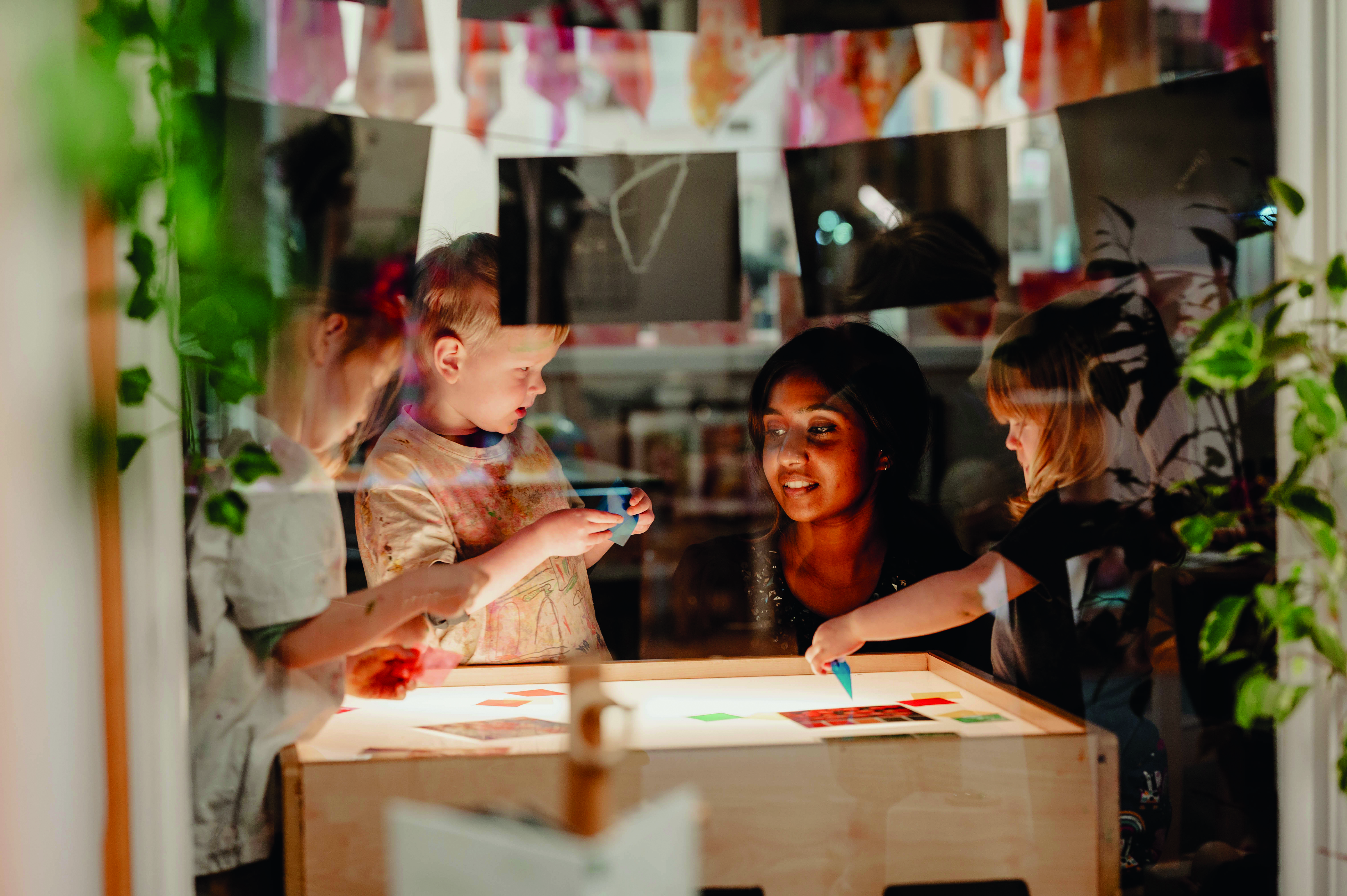 As the work at Little Barn Owls demonstrates, ateliers – meaning ‘art studio’ or ‘workshop’ in French – are not simply places for learning art techniques, but how materials and techniques can be developed in a broader context of children’s meaning-making (Vecchi 2010).
As the work at Little Barn Owls demonstrates, ateliers – meaning ‘art studio’ or ‘workshop’ in French – are not simply places for learning art techniques, but how materials and techniques can be developed in a broader context of children’s meaning-making (Vecchi 2010).
Kerry Smith, head of children’s and adult’s learning at Little Barn Owls, explains that in the Reggio Emilia approach there is an expression, ‘a child has a hundred languages’, which refers to art, music, dance, drama, photography, construction and much more. Children can enhance skills, collaborate and test theories, problem-solve, experiment and create in ateliers or studios.
‘We believe that reflective educational practice which builds on children’s ideas and predictions enables children to develop a strong sense of self to develop and test theories about themselves, other people and their place in the world,’ Smith says.
Early childhood consultant and artist-educator Debi Keyte-Hartland believes ateliers and studios are places for children to undertake their research of the world in playful ways. ‘It is principally a place of research for both children and educators where younger children are often researching the affordances of materials and resources that are capable of expression and communication,’ she explains.
‘For older children of three and upwards, they are beginning to engage with the materials and “languages” of art in ways to express and communicate their ideas, experiences, and thoughts they have. The research of educators is to find out more about their meaning-making and what connections they are making to understanding and representing the world that theyare a part of.’
A DEDICATED SPACE
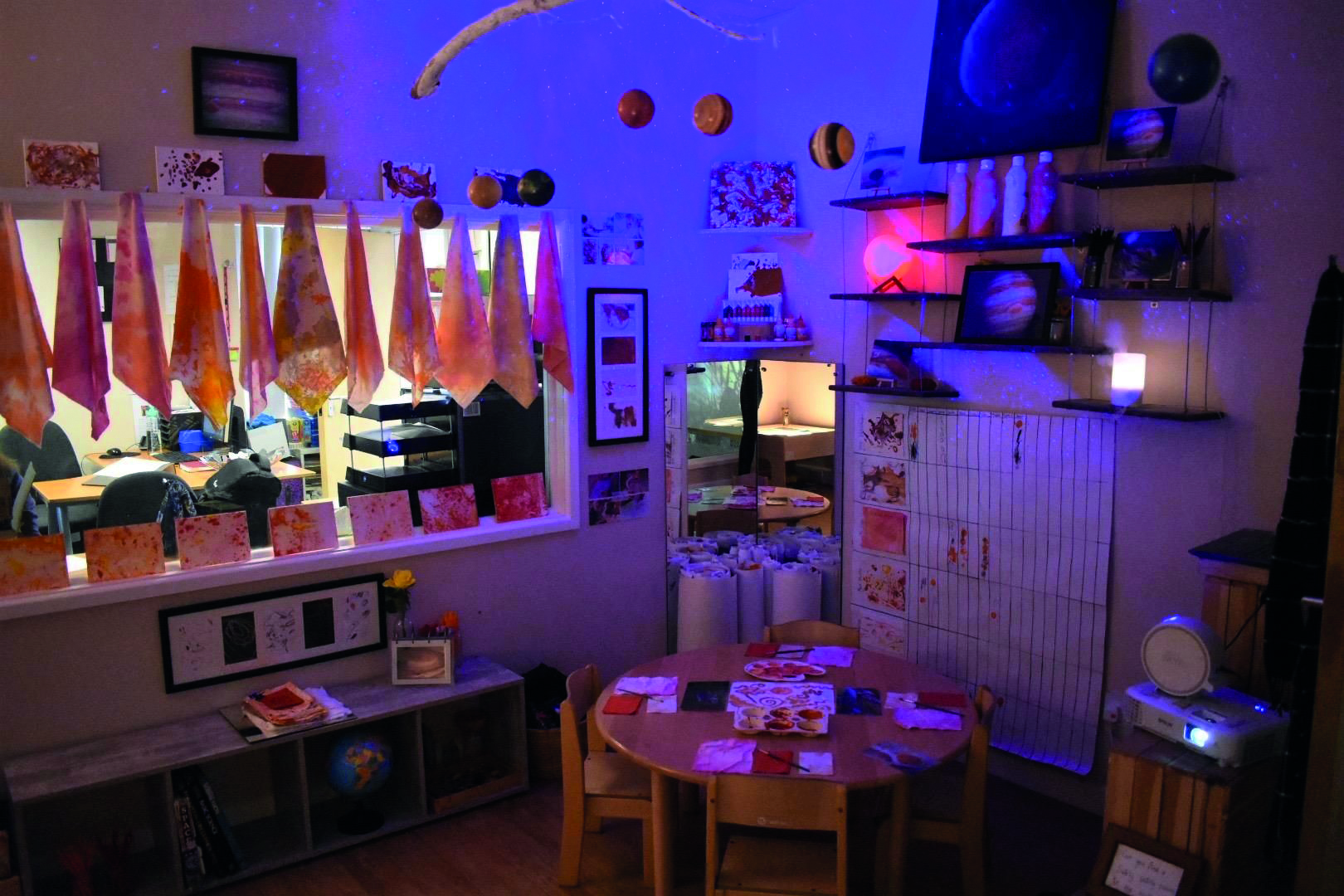 Creativity is encouraged throughout Little Barn Owls, but Smith says the atelier is a ‘protected space’ where children can go to deeply connect and work collaboratively on long-term projects. They have the time to be curious, follow lines of enquiry and have their learning extended by being introduced to a wide variety of materials and resources by a thoughtful atelierista or ‘co-researcher’. Planning where to take the explorations should be based on their questions, ideas and curiosities.
Creativity is encouraged throughout Little Barn Owls, but Smith says the atelier is a ‘protected space’ where children can go to deeply connect and work collaboratively on long-term projects. They have the time to be curious, follow lines of enquiry and have their learning extended by being introduced to a wide variety of materials and resources by a thoughtful atelierista or ‘co-researcher’. Planning where to take the explorations should be based on their questions, ideas and curiosities.
An atelier or studio is a space in which ‘the voice of the child is listened to and acted upon,’ says Keyte-Hartland. ‘It offers children opportunities for thinking together as a part of a small group; hearing and respecting the different ideas; finding similarities but also exploring differences, including those differences of opinion where discussion and debate over important subjects of life can take place,’ she explains.
‘We often talk about group work as something formalised and with a narrow learning intention, yet group work as we see in the pre-schools of Reggio Emilia, in Italy, reveal how group work in the atelier amplifies children’s capabilities to express and communicate their opinions and knowledge in learning and caring for living things, for considering ways in which to live and learn together in harmonious ways, for sharing ideas about the ecology of the planet and its welfare, and for caring and learning about the place in which they live.
‘The group work is the vehicle for deep, complex thinking based either in children’s own curiosities and enquiries or in those offered that will ignite interest of the group where materials and techniques of various art forms are used as “languages” to express and communicate their individual and group ideas constructed through collaboration.’
WHAT MAKES AN ATELIER
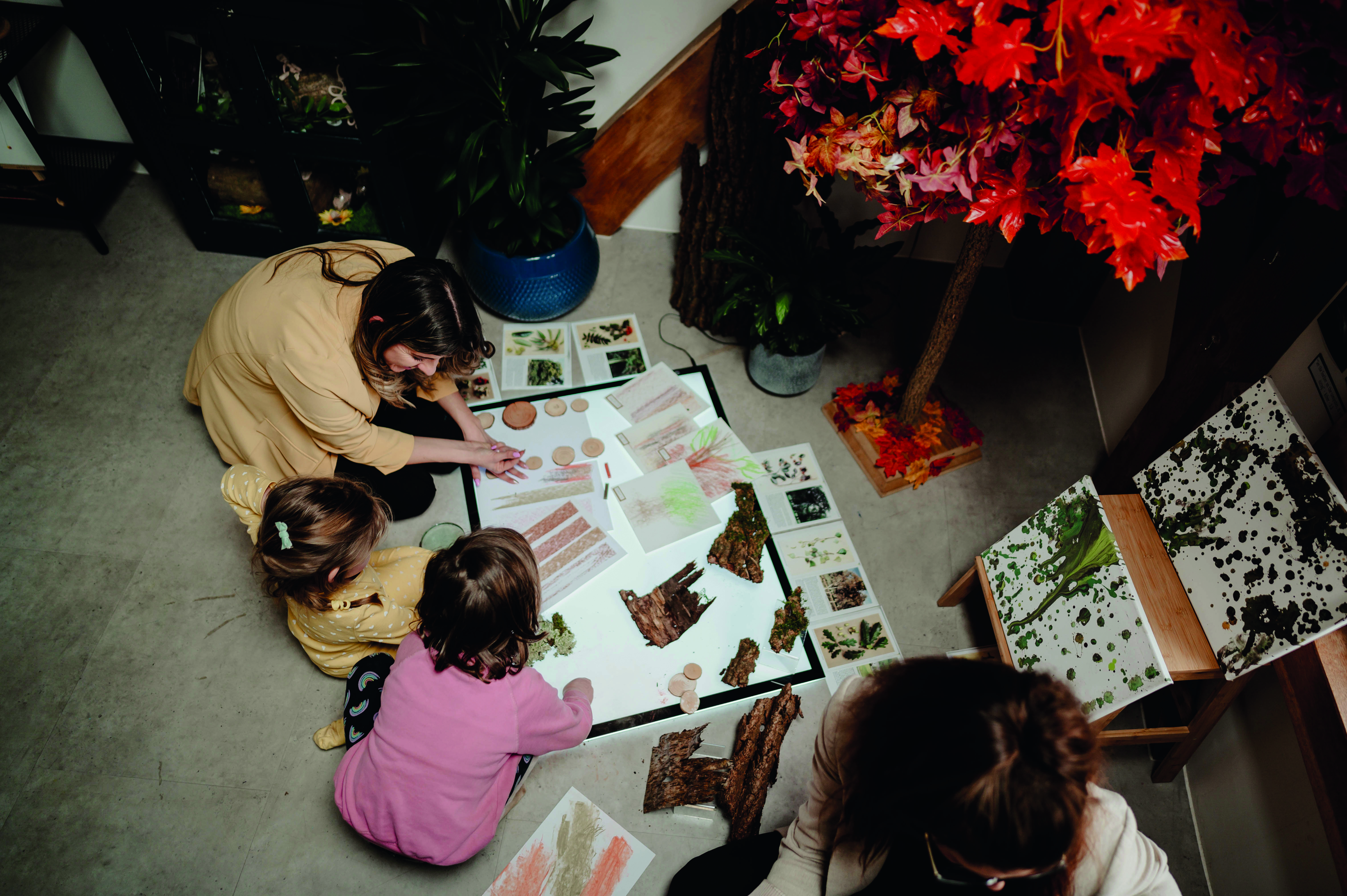 In the Reggio Emilia approach, the environment is regarded as the third teacher. For this to be the case, careful thought needs to be given to setting up and resourcing an atelier or studio. Keyte-Hartland suggests:
In the Reggio Emilia approach, the environment is regarded as the third teacher. For this to be the case, careful thought needs to be given to setting up and resourcing an atelier or studio. Keyte-Hartland suggests:
Space must be flexible so it can easily be transformed. Have different platforms on which to work, tables of different heights, staging units or smaller coffee type tables and the floor space too. This enables children to move around the space, find places that are comfortable to work, and also materials can be curated on a separate table, if necessary, so as not to occlude space for working together.
- Light needs to be changeable so that the space can be flooded with, ideally, natural light or made darker to support the use of light-tables. LED lamps can be used to illuminate or create shadows, and a pull-down blind or blank wall for projecting images or film as necessary. Project images on the floor for children to work within the light, image, or film.
- Materials should be in abundance and offer variation. Use lots of different types, sizes, textures, weights and transparencies of paper and card. This includes acetate or sheets of large plastic that can be cut into various sizes for drawing on lightboxes, or for transforming drawings by scale on an overhead projector. There should be a wide variation of drawing and paint media, of many shades and hues, plus containers of different kinds for investigating colour combinations. Clay is necessary for working in 3D. There should be a place for storing a wide variation of loose parts that the educator can curate in different ways. Variation is the key word, so with music, it is about variations of different kinds of sound makers, movements, of the types of stories that can be made up, drawn, or acted out.
TOOLS FOR INVESTIGATION AND DOCUMENTATION
- Mirrors for looking at yourself, both large and small, are useful, as are digital tools such as microscopes and magnifying glasses that can make the invisible visible. Books act as visual reference material, such as atlases, maps, ‘coffee table books’ of plant life and animals. Books that often are intended for older children, such as those on anatomy, are fascinating for younger children, who try to decode the visual information inside. Extend visual reference material to other artists’ work, music, films and animation that provide close-ups, time-lapse or slow-motion. Keyte-Hartland says most of all she likes to provide tools for children and the educators to document and make visible their evolving ideas about how and what they are learning – cameras, tablets, journals for collecting and reflecting on learning together are all good.
CASE STUDY: Alfreton Nursery School in Derbyshire
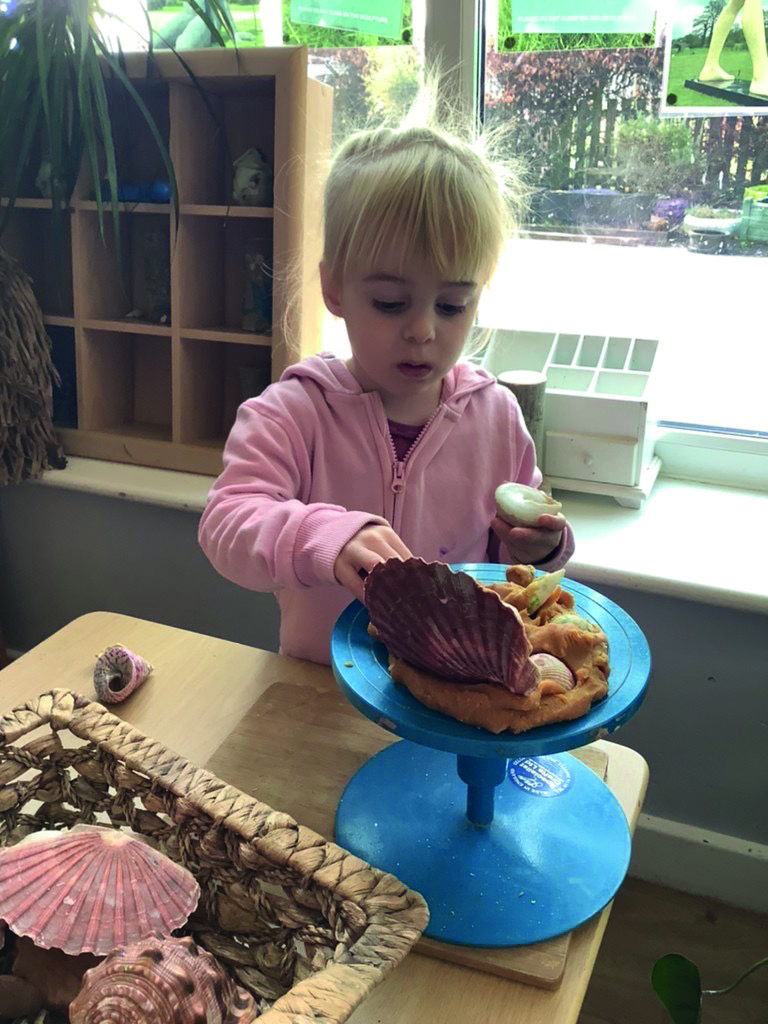
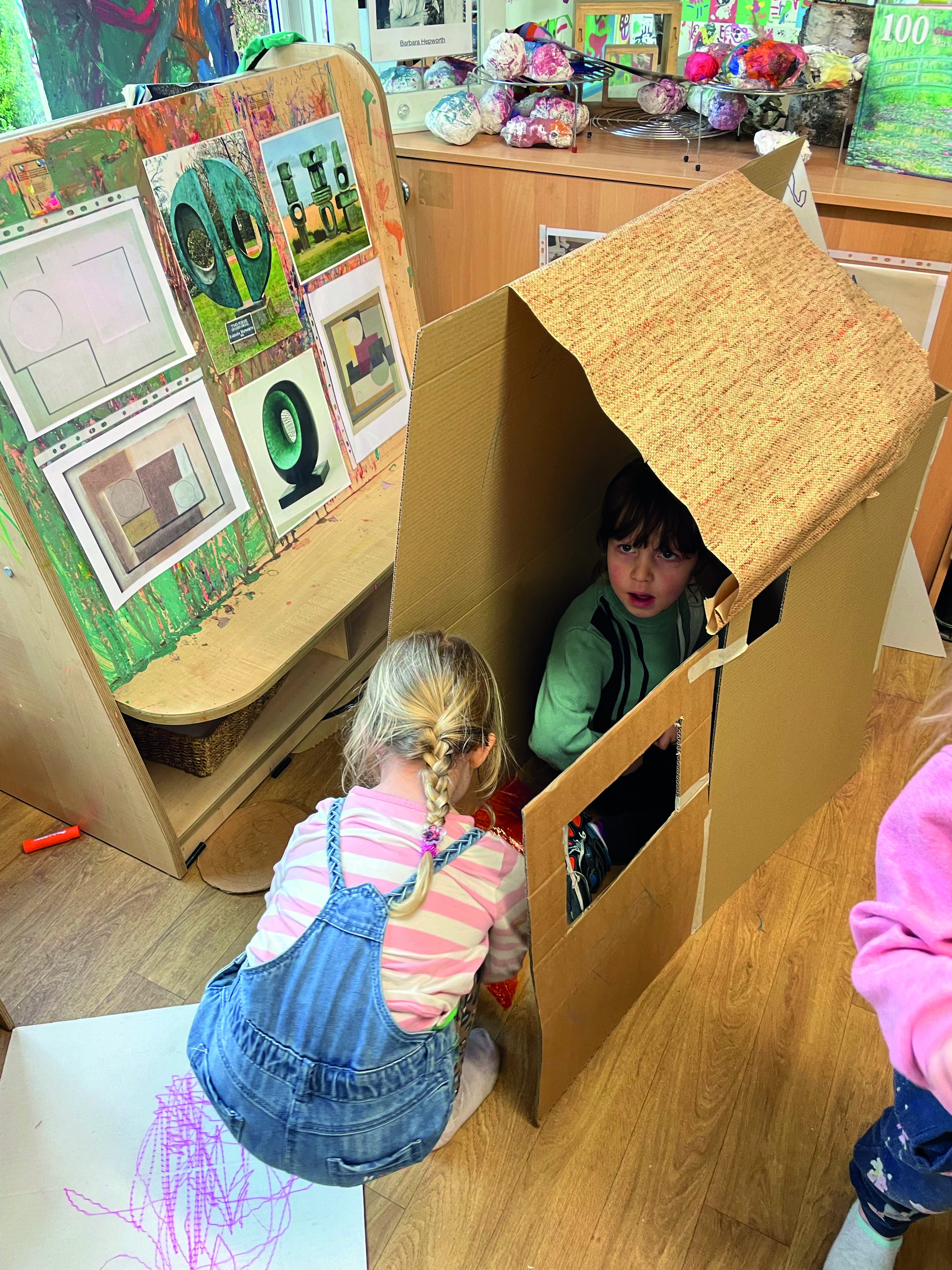 Coming back together, after being split into three ‘bubbles’ in the pandemic, gave Alfreton Nursery School the opportunity to rearrange how the building was used, which resulted in the repurposing of a light and bright room as an atelier.
Coming back together, after being split into three ‘bubbles’ in the pandemic, gave Alfreton Nursery School the opportunity to rearrange how the building was used, which resulted in the repurposing of a light and bright room as an atelier.
The aim was to have a dedicated place to promote children’s creativity. ‘We value and respect the children’s work and this is a place where they can bring their own ideas and interpretations, and we give them the space and encouragement to be imaginative and creative,’ says teacher Laura Dolby. The environment is calm, with music playing, and houses sculpture and observation ‘stations’, the latter containing examples of artists’ work. Children use lots of different mediums, including natural resources, and reference books and iPads for research. How children want to work was also considered, with space for working on the floor or at low tables, both independently and collaboratively.
‘It is a work in progress,’ says nursery nurse Louise Houschild. ‘We put out a lot of resources initially so the children could choose what they wanted, but some of our children struggled with that so we have reduced the resources so they are more manageable.’
Dolby says that, while they want learning to be child-centred, staff observed that they needed an element of role-modelling to give children the skills to work with new materials and extend their explorations.
‘We still want the work to be all about the children, but we have made a very basic plan that runs over a six-week cycle,’ she explains. ‘Currently self-selection is around printing, then we may focus on finer drawing, but it is very flexible. We want to have focus while not taking over the children’s creativity. On the first day of the week we focus on skillsets and then the children have time to take those skills in their own direction if they choose. We’re trying hard to get a balance.’
Along with encouraging creativity, Houschild explains that they incorporate metacognition and philosophy concepts into the atelier to encourage children to think critically about what they are doing, plan processes, ask questions and explore the answers. ‘It’s helping them to think outside of the box when it comes to their own creativity, like lots of famous artists,’ she says.
Inspired by professional artists
Introducing the work of different artists to the children has helped motivate children’s interests; for example, looking at Frida Kahlo’s work, the colours she used and introducing children to blending pastels. Or, exploring Antony Gormley’s Angel of the North sculpture, looking at the shapes and discussing its large scale.
The nursery is fortunate to have a staff team who are creative, but funding enabled them to bring in a professional artist to work with the children in the atelier for three months at the beginning of the year. Artist Rachel Scanlon worked on a 3D art project with the children in the atelier. She says, ‘We were able to co-create and bounce ideas off each other. Children are not worried about breaking rules and will try things and be inventive. I showed them my work and techniques and let them get on with it. It was really child-led.’
Scanlon started by supporting them to make objects out of clay and use a potter’s wheel before introducing them to mod roc. The children were fascinated with the new material and how it could be scrunched in their hands before drying hard. Looking at geometric shapes that artist Ben Nicholson uses in his work led the children to make pictures by laying shapes on each other but also building dens with large pieces of cardboard.
‘We focused more on experiencing the process and trying things out rather than the finished product,’ Scanlon says. ‘Children were able to push the different materials and see what happened with them. It was all about extending their abilities and their thought processes.’ She saw that children’s confidence grew during the project.
Starting an atelier
Dolby recommends starting small. ‘Start with something that you have confidence with, perhaps a small observational table with a photograph and some paper and pencils. Think about what the children are doing, what they are interested in, what materials you have, what space you have available and go from there,’ she advises.
It is important to give children freedom and time to explore a variety of materials, and for staff to observe what they are doing. ‘Allow them to understand how different materials work so they can build up that knowledge and skill,’ she says.
FURTHER INFORMATION
- Art and Creativity in Reggio Emilia: Exploring the role and potential of ateliers in early childhood education by Vea Vecchi
- The Hundred Languages of Children: The Reggio Emilia Experience in Transformation, edited by Carolyn Edwards, Lella Gandini and George Forman
- https://debikeytehartland.me









